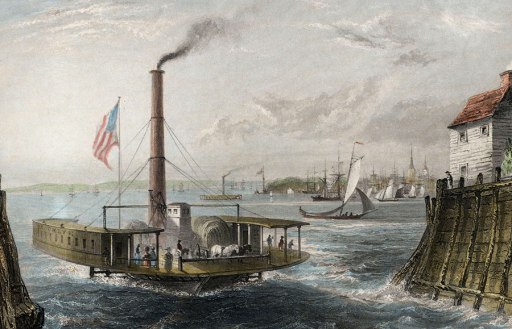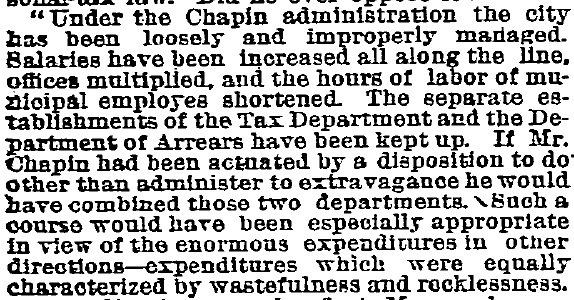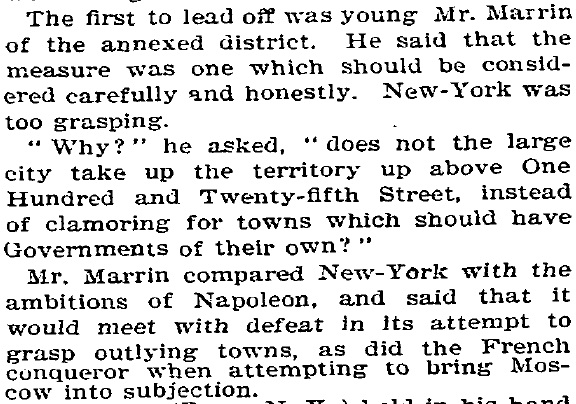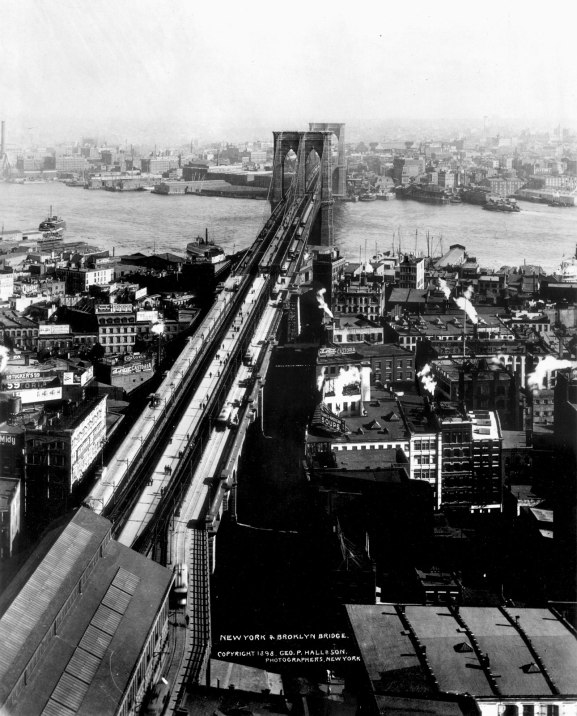Almost immediately upon its discovery, New York Harbor was recognized as one of the greatest natural waterways in the Americas, if not the entire world. As such, the Dutch were quick to settle the isles and inlets surrounding it as quickly as possible, first with a fur trading outpost on what is now Governor’s Island, which moved to Manhattan and became Nieuw Amsterdam the following year. The Dutch arranged for the purchase of the island from the resident Lenape Indians in 1626, and the development of the rest of the harbor followed suit in rapid succession.
What we now know as New York was a collection of hamlets and towns surrounding the harbor, lining the coasts of the East River, taking advantage of the booming New World trade of furs, lumber, and other goods. By the time the English conquered New Netherland in 1664, the towns of Nieuw Amsterdam, Breuckelen, Maspeth, Vlissingen, Gravesend, New Amersfoort, Midwout, Nieuw Utrecht, Hallett’s Cove, Boswijck, and Oude Dorp were all thriving and trading on Manhattan, Yorkshire (Long Island), and Staaten Eylandt (Staten Island). England renamed the colony New York, anglicized many of the towns’ names, and flooded them with throngs of English settlers. The Dutch briefly re-conquered the harbor in 1673, but returned it to England the following year in exchange for Run Island, a coveted link in the global nutmeg trading chain.
In the 1680s, England arranged the harbor into a series of counties: Manhattan Island became New York County; the six towns on the western end of Yorkshire became Kings County; the rest of Yorkshire became Queens County; Staten Island became Richmond County; and the southernmost point of the mainland became Westchester County.
New York’s villages played a vital role in the American Revolution, with the Battle of Long Island on August 27, 1776 being the first major conflict of the War as well as the first time an Army of the United States ever engaged in battle. New York emerged from the war a prosperous city, and was named capital of the fledgling nation from 1785-90. It is where George Washing took his oath of office, where the Bill of Rights was drafted, and where the Supreme Court first met. The region was quickly becoming the center of cultural and political life for the country.
In 1816, Brooklyn (formerly Breuckelen) incorporated as a city. Connected to New York via the Fulton Ferry over the East River, Brooklyn Heights developed as the nation’s first suburb: its residents thusly became the world’s first commuters.

A map of Brooklyn’s 6 original towns.
From “Historic and Beautiful Brooklyn” by the Brooklyn Daily Eagle, 1946
North of Brooklyn, the western portion of Bushwick (formerly Boswijck), separated as it was from the center of town by bogs and marshes, seceded to form the town of Williamsburg. This would be a short-lived independence, however, as in 1855, both towns were absorbed by the City of Brooklyn, forming the 3rd-largest city in the nation, trailing only its neighbor New York along with Philadelphia.
Also in 1855, Castle Garden on Manhattan’s southerly tip opened as the first immigrant control station in the nation in an effort to handle an ever-increasing deluge of immigrants from Europe: a deluge which only increased at the conclusion of the Civil War in 1865. By that year, Brooklyn and New York had combined forced to form both a metropolitan police force and fire department. And in 1870, Astoria (former Hallett’s Cove) annexed nearly a dozen hamlets in western Queens County to form Long Island City. Rumblings of further city consolidation began to develop.
As cities on both sides of the East River continued to grow at an immense clip, worries over water began to develop and intensify. New York, anticipating continued growth (think of the 1811 Grid plan), finished construction in 1842 of the Croton Aqueduct, bringing a steady supply of fresh water from the Croton River in Westchester County to reservoirs throughout the city.
Brooklyn, meanwhile, looked east to ponds and streams in eastern Kings and southern Queens Counties. That supply, however, quickly depleted: wells turned salty and the water table dropped significantly, leading Brooklynites to increasingly worry about their future supplies.
In 1892, Brooklyn’s mayor Alfred C. Chapin was brought down in a scandal involving the city’s illegal seizure of a private water supply company in the recently-annexed town of New Lots. The city in political turmoil, more and more Brooklyn residents began to demand consolidation and leadership reform. The city’s ties to New York had been growing stronger anyway: the Brooklyn Bridge connected the two in 1883, and by 1890, it was estimated that 1/3 of Brooklyn’s population commuted to Manhattan Island for work. Cries for consolidation also began to ring out from smaller, outlying towns such as New Utrecht, whose populations consisted almost entirely of commuters, and whose politicians were unbearably corrupt.
At the same time, the powers-that-be in New York feared losing their status as America’s commercial heart to the rapidly-growing city of Chicago on Lake Michigan, whose domination of the Midwestern farm belt and rail lines was causing its population to boom beyond what New York could hope to match in the coming decades, if left to its own limited territory.
Many in Brooklyn, however, resisted consolidation with a vengeance. By 1884, fully 70% of all American exports passed through New York, making it, far and away, the dominant voice in the proposed annexation. Brooklynites feared losing their civic identity and of losing further economic power, should they become merely an appendage on the greater New York City body. And there was the question of taxation: New York had one of the highest tax rates in the nation at the time. Would Brooklyn be forced to pay the same? And would their money go merely to support New York’s grand civic hubris?
But with water supplies in question, politicians in disgrace, and an increasingly vocal population wishing to make the city where they worked and the city where they lived one in the same, consolidation seemed an inevitability. Multiple iterations of a consolidation bill were drafted over the following years, beginning in 1894, with squabbles over tax rates, leadership, and voting procedures. All were vetoed, owing to cries of unfairness from one side of the other.
On May 4, 1896, the cities decided by a narrow vote and on May 12, with the signature of Governor Frank Black, the announcement was made: the twin cities across the East River would join Richmond County and western Queens County in forming “Greater New York.” The new mega-city would be the largest in the world, comprised of 5 governing bodies to be known as boroughs: Bronx (then still part of New York County), Manhattan, Brooklyn, Queens, and Richmond. (Eastern Queens County would secede from the annexed portion of Queens County in 1899, forming Nassau County. And The Bronx would become an independent county in 1914.)
January 1, 1898, the law went into effect, creating a city of more than 3,000,000 citizens. And in 1917, Brooklyn completed a link to the Croton Reservoir, ensuring a reliable supply of fresh water for generations to come. Today, despite a century of unity, however, Brooklyn holds fast to its sense of independence and civic identity, referring to the consolidation as “The Great Mistake of ’98.” And as recently as 1993, Staten Islanders voted 65% to secede from the city, but were blocked from doing so by state legislators. The topic of Greater New York will always be controversial to some, but the city’s greatness cannot be disputed. And it all started with a collection of quaint Dutch towns lining a harbor.














Thanksgiving has been the subject of many pieces of fine art for centuries. Jean Leon Gerome Ferris, “American painter and illustrator of Americana,” painted several Thanksgiving-themed scenes, including The First Thanksgiving (1915), The Mayflower Compact (1925), The Return of Miles Standish (1920), The Return of the Mayflower (1907), and The First Sermon Ashore (1921). Thanks for sharing!
Pingback: Wandering Williamsburg ‹ CityEllaNYC